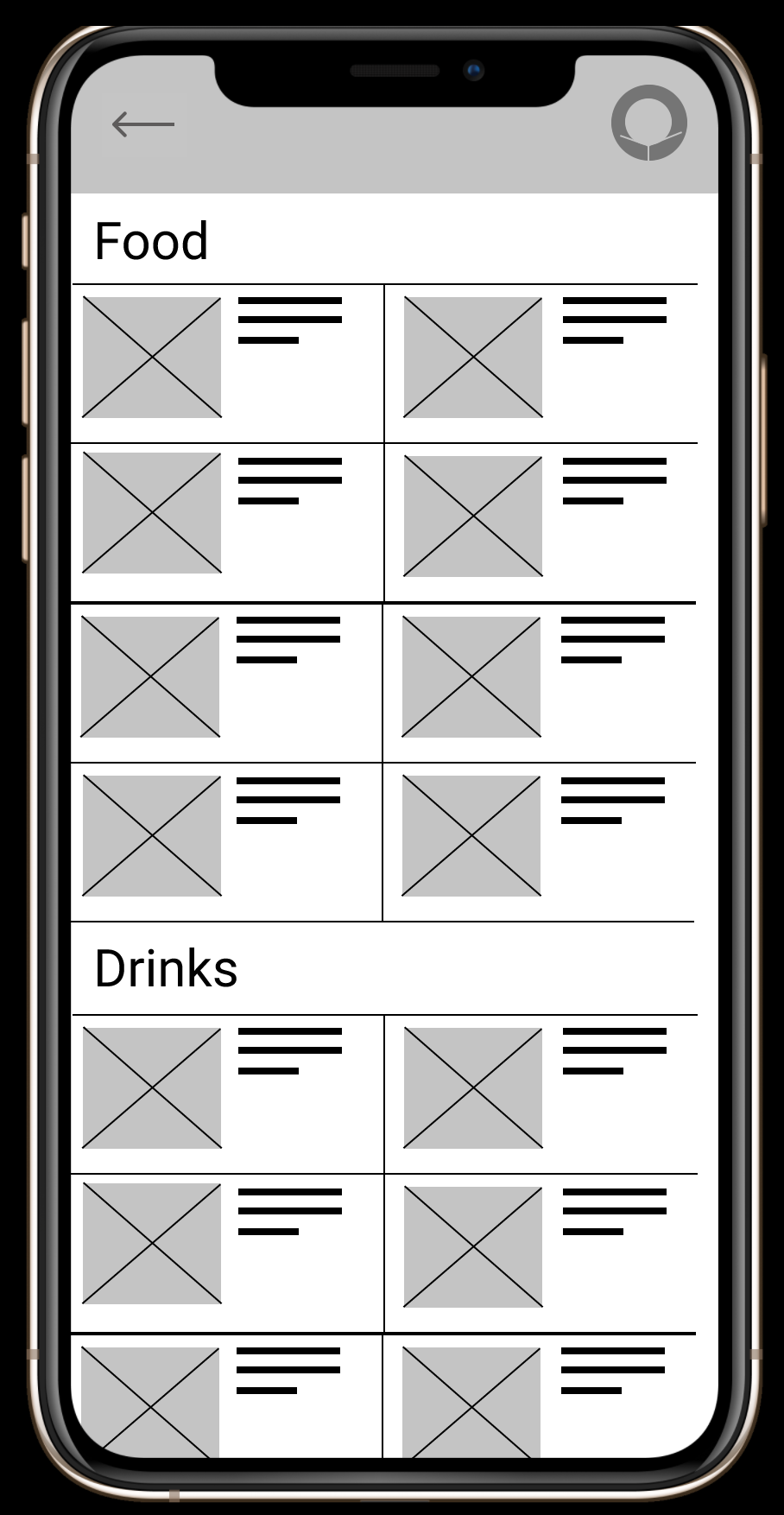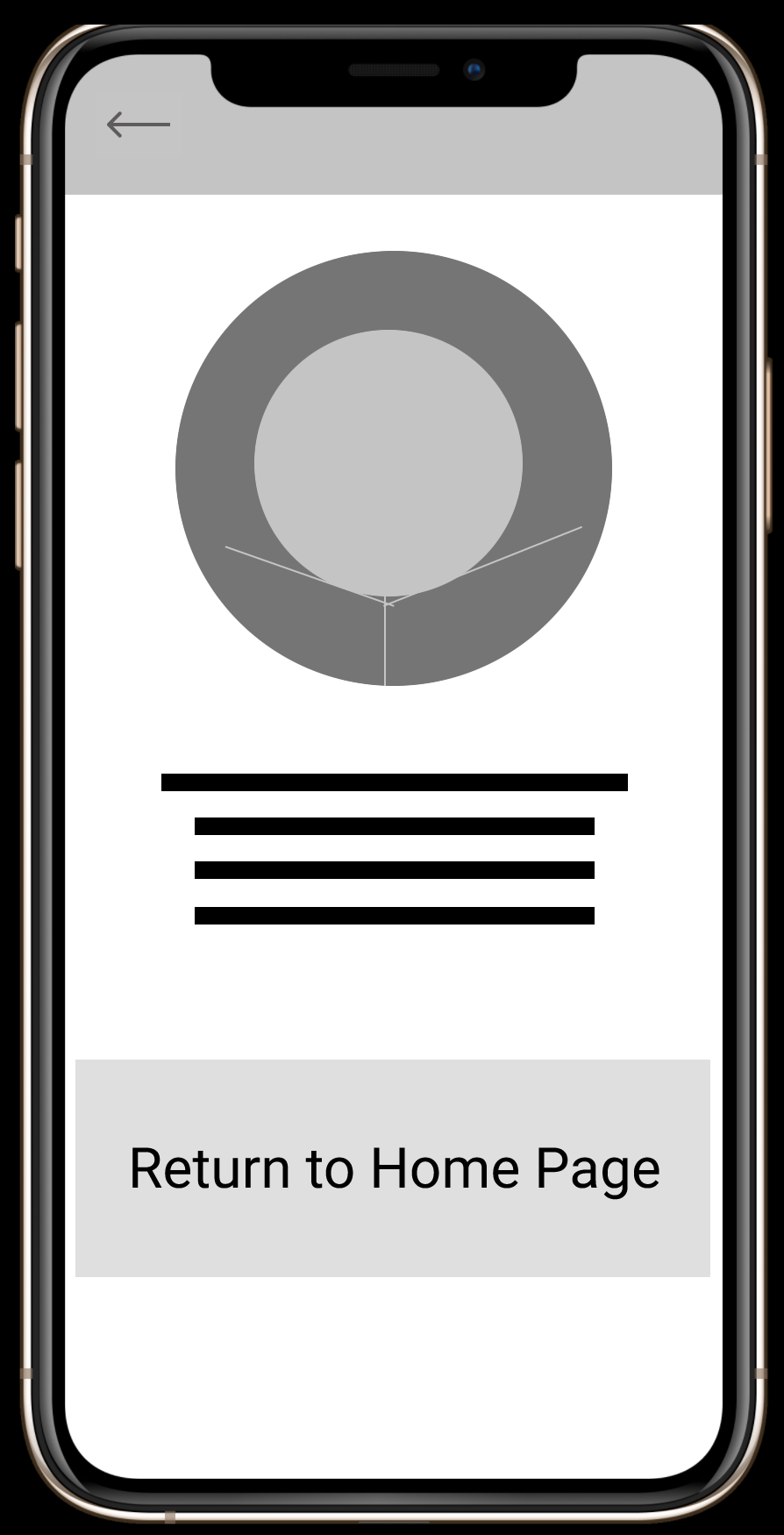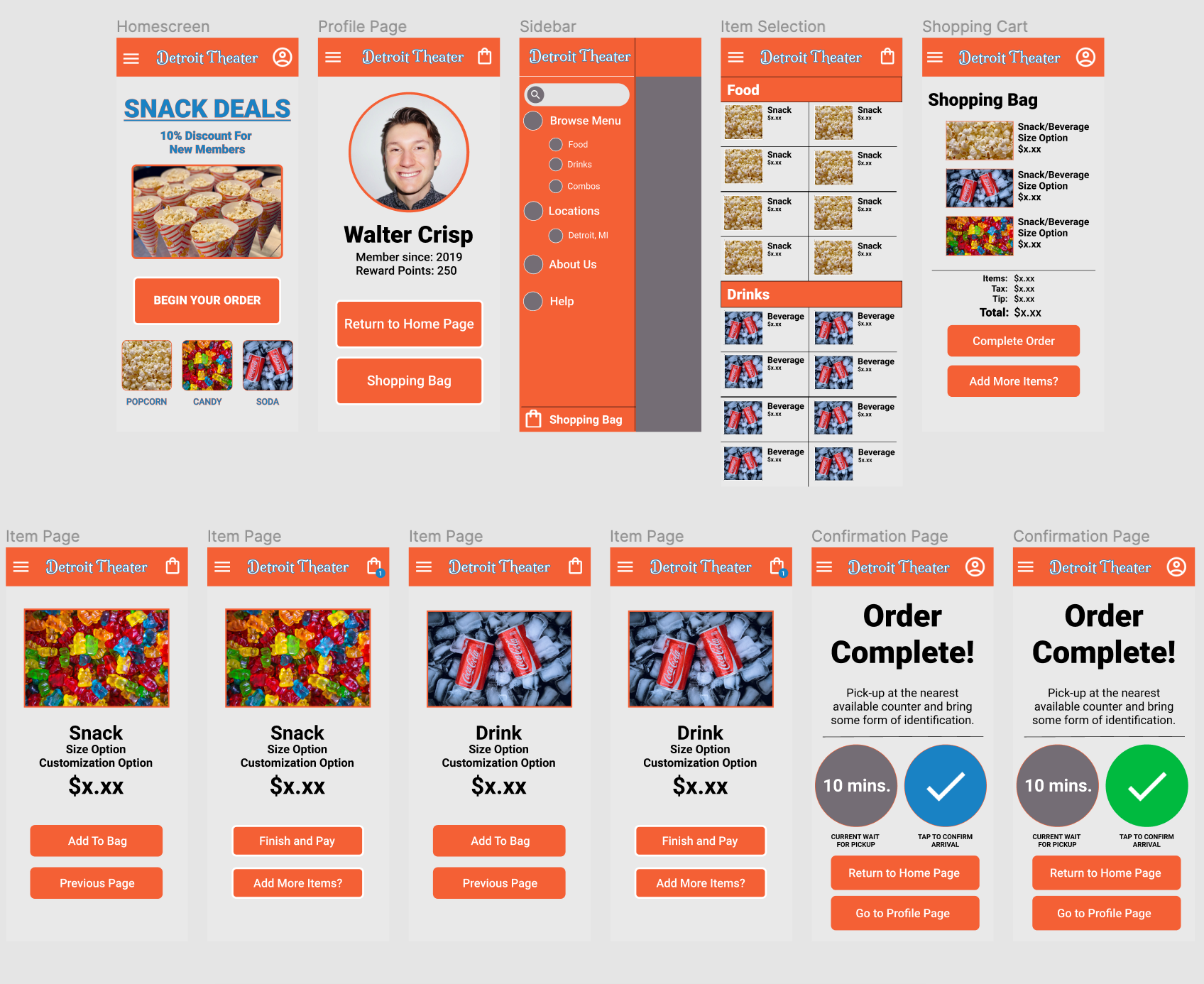At-a-Glance
Detroit Theater is a mobile application design within the Google UX Design Specialization course, wherein I undertook the design of a mobile application tailored for users in the Detroit area. The primary objectives were to provide a comprehensive overview of current film screenings at local theaters and enable users to seamlessly order snacks through the application. As a resident of Michigan and an avid moviegoer, my intrinsic connection to the local community fueled my ambition to create an application that not only informs users about movie schedules but also enhances the cinematic experience by facilitating convenient snack and beverage ordering functionalities.
Problem
The prevailing issue observed in many theater-affiliated applications lies in their superficiality, as they often fail to empower users to make choices aligned with their specific interests. This critical insight underscores the need for a more user-centric approach, emphasizing the integration of personalized features to enhance the overall user experience.
Solution
Conducting a thorough analysis of the features essential to an ideal application, I strategically incorporated key functionalities. These include a pre-movie ticket ordering system, a customizable drink and snack selection interface, and a virtual checkout process. These user-centric implementations aim to optimize the overall user journey, fostering a seamless and immersive experience in line with contemporary UX design principles.
Cartoonized version of Jerry, a 24 year old college graduate who enjoys seeing movies with friends
User Journey Flow
Paper Wireframes
The iterative design process commences with the creation of initial paper wireframes, meticulously crafted through diverse brainstorming methods. Subsequent phases include the transition to digital wireframes, followed by the development of high-fidelity mockups, culminating in the delivery of the polished and finalized product. This methodical progression ensures a comprehensive exploration of design concepts, aligning with established UX methodologies and principles.
From Paper to Digital
Subsequently translating conceptual ideas from paper to a digital format, I initiated a phase of user trials concurrent with the development of a low-fidelity prototype. This strategic approach ensured the incorporation of user feedback at an early stage, facilitating iterative refinement in alignment with user-centered design principles.




User Testing
Upon completing preliminary low-fidelity prototypes, I conducted targeted usability testing sessions with specific user groups seeking an application catering to their requirements for accessing movie showtimes at the Detroit Theater. This user-centric approach allowed for valuable insights and informed refinements in line with usability standards and design optimization principles.
Test with 5 local users who frequently visited the theater near them
Low-Fidelity Prototype
Design Changes
1) Elevate Snacks and Drinks as Primary Components: In response to user preferences, the design prioritized snack and drink customization, offering users a heightened sense of control over their choices through a personalized and adaptable selection interface.
2) Introduce Combo Customization: Addressing user feedback, the application now features combo meal customization, empowering users to tailor their selections and curate personalized combinations that include their preferred options.
3) Streamline Checkout with Saved Payment Options: Recognizing the user need for efficiency, the checkout process has been optimized by implementing a functionality to save past payment options. This enhancement expedites the payment process, aligning with user expectations for a seamless and time-saving experience.
Digital Wireframes and Mockups


High-Fidelity Prototype
Final Designs (All Pages)

Product Successes
This application introduces a paradigm shift in the movie theater snack ordering experience. By not only eliminating queues but also facilitating enhanced customization options, it streamlines the user journey, fostering a more seamless and personalized ordering process for customers. This innovative approach aligns with contemporary UX principles, enhancing user satisfaction and overall convenience.
What I Learned
Throughout my tenure on this project, I've recognized the significance of conducting comprehensive competitor analyses, delving into local theaters and businesses in direct competition with the focal location. This practice has been instrumental in identifying both advantageous practices and areas requiring enhancement, contributing to a more informed and strategically aligned UX design process.

